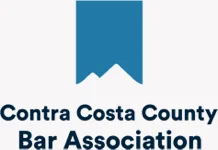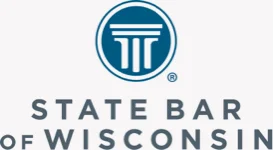Yes, your audience is noticing that outdated copyright year in your footer. While you might order pizza from a website that’s straight out of 2005, you probably wouldn’t trust a lawyer with a site like Saul Goodman’s.
Many firms are guilty of these blatantly outdated mistakes, despite how obvious they are. But it’s 2024 and there’s no excuse.
From COVID messaging to ancient blog posts, we’ll cover five dead giveaways that your law firm’s website is outdated—and what you can do about it.
1. You still have a COVID message.
Your visitors will immediately be suspicious if your site still has a 2021-era COVID message like, “As the world continues to stay home in the interest of safety, we are offering remote consultations.”
It’s fine if COVID transformed some of your business practices. Remote consultations are great, and it’s okay to be clear about any health or masking policies. However, all messages need to be written so they’re actually relevant to 2024, instead of holdovers from the early days of panic.
Delete your COVID messaging and make sure there’s no trace of it on your home page. If your practice area is in a relevant industry, move all your COVID content to a separate page like “How we handled COVID.”
2. The copyright year in your footer is old.
“Copyright 2017” is a serious red flag. This makes it seem like you haven’t updated your site since 2017—and maybe it’s true!
The copyright year in your footer serves as a notice to visitors that your website’s content is protected by copyright law, meaning that you have exclusive rights to reproduce, distribute, and display the content.
Update the copyright year annually. This demonstrates that you’re actively maintaining and protecting your intellectual property rights.
3. Your last blog post was…a long time ago.
Expertise is not eternal. If your blog posts are dated more than a year ago—or if they’re undated—your online visitors may doubt whether you’re up to speed with the industry. At the very least, a big gap in blog post publishing shows disregard for consistency.
If you haven’t posted in a while, it’s likely that you may also need to audit your blog posts. A strong content strategy requires ongoing edits and adjustments.
Delete any posts that aren’t high-quality. Edit and migrate posts that can be saved, and be sure to include the new pub date. Commit to a sustainable content publishing strategy going forward to keep first impressions positive—and good SEO juice flowing.
4. It’s not responsive or accessible.
Nothing says “1995” like a website that doesn’t resize automatically on mobile devices. If your site isn’t responsive, we’re sorry to say that you may need a new developer or a brand new site.
It’s equally jarring for visitors to see sites that ignore accessibility. Alt text is easy. Designing for screen readers is straightforward.
Ultimately, failure to prioritize accessibility for all your users—like disabled users using assistive technology or commuters on their phones—alienates a significant portion of your audience. It also reflects poorly on your firm’s commitment to inclusivity and user experience.
Lack of accessibility is a relic of the past. Get with the times. If you need an accessible website template you can customize affordably, these options are ADA-compliant.
5. Your User Experience (UX) stinks: broken links, old photos, etc.
Truly, bad UX might be the final straw for some of your visitors. People expect more from websites, and they’ll click off a site that doesn’t meet their desire for seamless navigation and aesthetic satisfaction.
The good news is that, as expectations for website design quality have skyrocketed, so has the availability of design tools.
There’s no excuse for bad design in 2024. You can find a budget-friendly website developer who prioritizes accessibility and good design.
Review and next steps
We understand that design isn’t everything. But everybody judges a book by its cover—and that judgment often determines whether they actually read the book itself.
Outdated design is concerning to online visitors, and it’s probably losing you business. People notice more than you think they notice. They’re less willing to accept bad design nowadays, especially in high-value, high-trust scenarios like hiring a lawyer.
Fixing an outdated website is a great investment of your time and money. If it’s as simple as deleting a COVID message, great! If there’s more work to be done, you might need a new design and new strategy to bring your firm into the modern age.
Start with a consultation to see if a OneFirst Legal site could work for your law firm.












